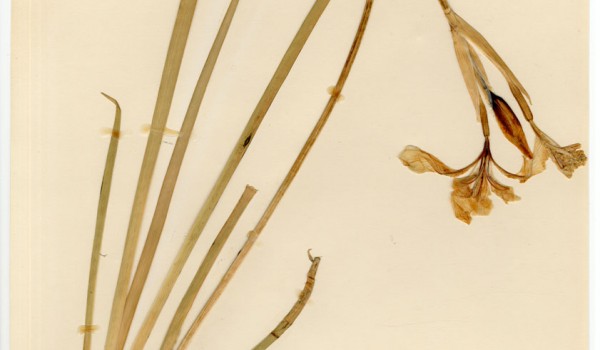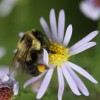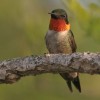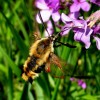Iris (Iridaceae)
Western Blue Flag
Iris missouriensis Nutt.Western Blue Flag is the only Iris native to Alberta. It is rare, and occurs in habitat easily damaged by humans. This plant relies on pollination for reproduction, but can also spread by growth of underground rhizomes. Although pollinators are poorly documented in Alberta, its flowers are probably pollinated by bees and hummingbirds. In the past, plants have been used medicinally, and to make cords for nets and other uses.
Flower Colour:
- Purple
Flowering Season:
- Summer
Flowering Months:
- July
- June
Canadian Rarity Status:
Western Blue Flag is protected under Canada’s Species at Risk Act and is considered “threatened” under Alberta’s Wildlife Act. The collection of wild plants and seeds is illegal on public lands.
Physical Appearance:
This long-lived perennial has stems that grow 30 to 60 cm tall, from an underground rhizome. Along each stem are two vertical rows of long, straight leaves. Its leafless, flowering stalks produce up to four flowers that bloom in succession. Each flower has three curved sepals with visible nectar guides, and three narrower petals. Fruits are capsules that split open to release seeds that can be spread by wind or water.
Similar Species:
Blue Flag (Iris versicolor)
Gardening Notes:
Do not purchase wild-collected seeds or plants. Seeds and/or plants from nursery-raised stock may be available.
Canadian Distribution:
- Alberta
Prairie Types:
- Fescue Prairie
- Mixed Grass Prairie
Habitats:
- Hillsides
- Meadows
Moisture Conditions:
- Moist
Light Preference:
- Full Sun
- Part Shade
Soil Preference:
- Clay
- Sand








 Bumble, Honey, and other Bees (
Bumble, Honey, and other Bees ( Hummingbirds (
Hummingbirds ( Sphinx and Hawk Moths (
Sphinx and Hawk Moths (